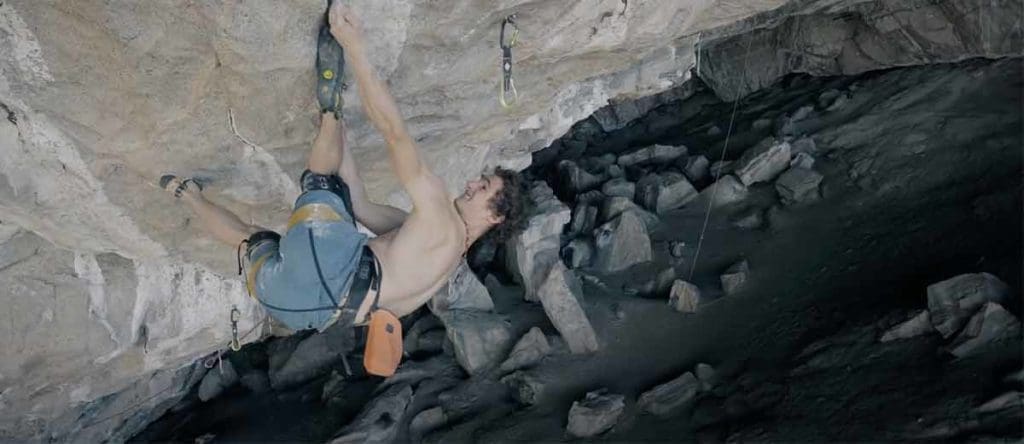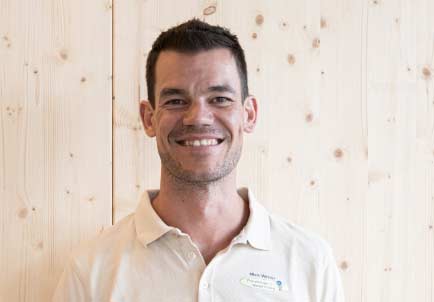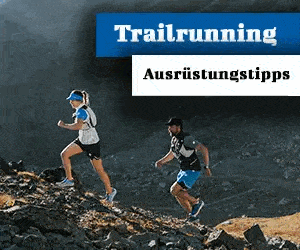The study of movement sequences and the mental preparation for a route are key success factors in climbing. In this context one speaks of visualization, a technique that Adam Ondra used for the ascent of Silence (9c). Sports physiotherapist Marc Wetter shows in today's post how you can increase your climbing level thanks to targeted mental training.
A contribution by Marc Wetter from Marc Wetter GmbH
Steel nerves, motivation and physical fitness are not the only deciding factors when it comes to climbing a climbing project. The implementation of the technical movements and the mental strength are almost as important. On the mental level there is often more potential than you think. Many athletes report that the mental area accounts for 50% of their performance. Nevertheless, less than 5% of athletes devote themselves to the mental aspects during training.
Suddenly, the key point on the route is no longer that difficult
Perhaps it has already happened to you that you had to plan a route meter by meter. At the beginning it is very tiring, with practice the individual sequences go better, faster and are less tiring. Your brain learns and networks nerve cells. Perhaps you can suddenly imagine the route almost by heart, although you have not yet completed a climb.
How can I combine my mental imagination with my training as a hobby athlete? Can I get through a route faster by visualizing it? Can I learn to visualize for fun if I am not that ambitious and I just like to climb?

What is visualization?
A little generalized, it can be described as an umbrella term for repetitive and consciously imagining a sporting action, for example a boulder or a climbing route.
This idea can be done without actual practical execution in the head or even used as a break exercise.
The more real the idea is, the more effective is the success.
Visualization brings great advantages in very technical sports such as climbing or bouldering. Likewise, athletes can mentally stabilize their technical movements in all phases of rehabilitation in the event of injuries.
Visualization is used when climbing to refine movement sequences, to feel movement sequences or to mentally climb entire routes.
Error sequences, hesitation or tactical mistakes during attempts to get through can also be mentally corrected.
Top athletes can visualize their climbing movements very realistically and know every step by heart in their project. Where are the rest points and what am I doing? Where do I climb faster? How do I breathe? How do I move in the crux? How does the movement in the crux feel?
Visualization was central to the Silence (9c) climb
What does visualization need and how do you go about it?
Visualization requires concentration. "Practice creates masters". If you practice a lot, you can achieve a lot. Distraction or wandering is normal at the beginning. Relax and try again and again and again.
Take a few minutes Sit or lie relaxed. If possible, close your eyes or concentrate on a fixed point. Try to hide disturbing noises or thoughts without rating.
Practice at most 5 minutes at a time, but 2-3 times a day.
As a beginner's exercise, try to imagine sequences from your everyday life with all your senses: seeing, hearing, feeling, smell, (taste). For example, tie shoes, arrive at home etc.
Then try your sequences, movement sequences in the hall or on the rock as advanced exercises. Practice individual moves first and then connect the moves.
A maximum of 5-10 minutes at a time, every day.
Tips for visualization
Video and teamwork
You can have a colleague film you. Then you can discuss together what was good or what was difficult. Improvements can then be better visualized mentally. You can ask each other how the sequence is going. Hold like that, step like that, pull like that ... etc.
Photo Shoot
Individual important passages of the movement or the crux are photographed, printed out and visualized.
reality check
Imagine a visit to your climbing hall. Try to imagine your visit in color, in motion. Notice the smell and hear what sounds are there. Now try to perceive your sequence or route with the senses.
Time check
As a goal, the visualization of a movement or sequence should correspond exactly to the time that you actually have. Stop the time and improve yourself.
Ideomotor training
Combine your movements with the idea. Do the trains of the route in the air with your arms, try to stand on your feet with your feet. Climb your route mentally, breathe at the rest points. Stop your time.
Conclusion
Those who can visualize precisely, realistically and with optimal timing definitely have advantages in learning the movement sequence, in optimal performance, in reaching their potential and as a prevention for injuries. It is an exciting field to discuss with others, to learn from each other and to present or push solutions to one another.

About Marc Weather
Marc Wetter is the managing director of Marc Wetter GmbH, sports physiotherapist ESP. He supports hobby and competitive athletes with mental challenges and is a passionate climber.
www.marcwetter.ch
That might interest you
+ + +
Credits: Cover picture AO Productions


